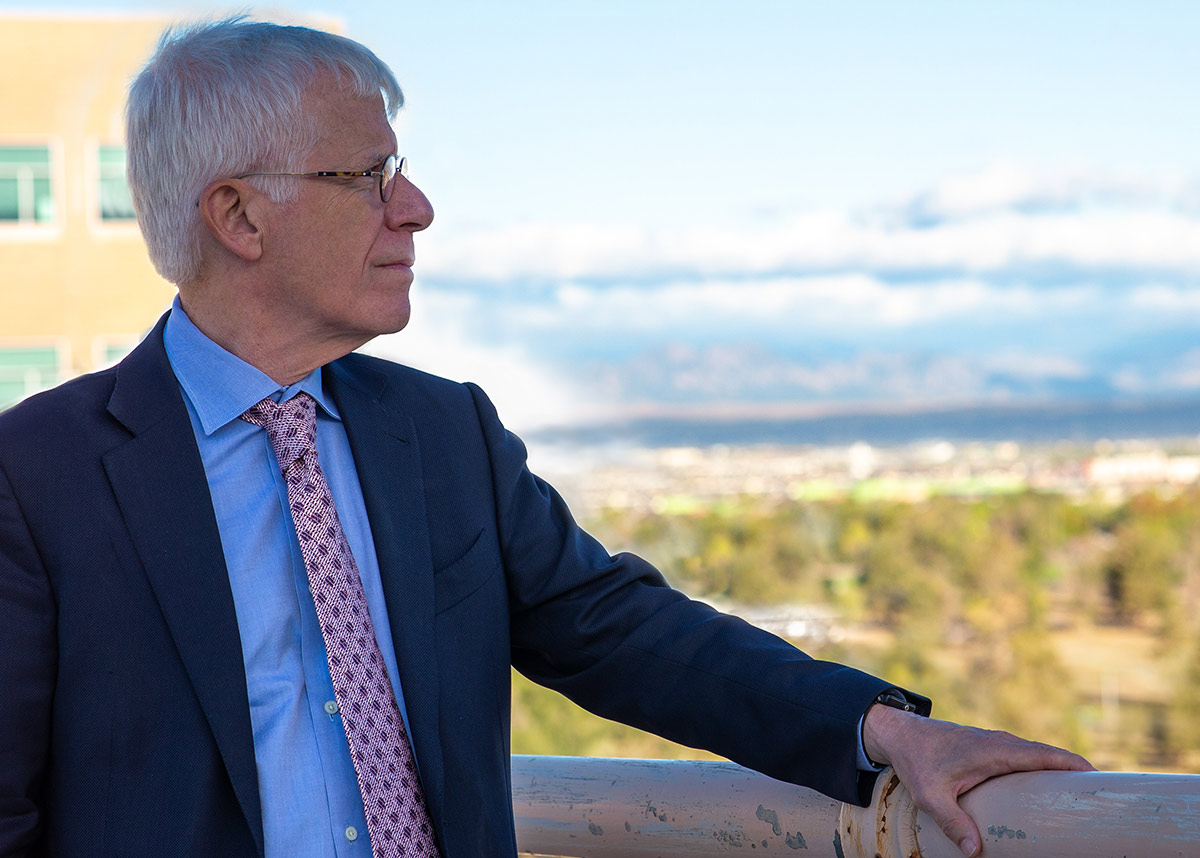The COVID-19 Pandemic and More: Will COVID-19 rise again, the Atomic Age, and the last day as dean
Jul 31, 2023
Will the epidemic curve for COVID-19 turn upward? There are some indications that the epidemic curve is no longer trending down, but it is not clearly heading upward either. In Colorado, the hospitalization count last week was at 63, comparable to the count of 59 the prior week. Of the 59 sites with monitored wastewater concentrations of SARS-CoV-2, 17 show a steady increase, 11 show an increase, and 19 remain plateaued. Population susceptibility may be rising, given the time since the initial Omicron surge and the limited penetration of the bivalent booster. As we move into August and the opening of schools, there is further cause for concern.
These commentaries were motivated more than three years ago by the explosive onset of the COVID-19 pandemic and the urgent need for communications to the Colorado School of Public Health community and the general public about the ever-changing story of what was happening. My commentaries and the school’s collaboration with the Denver Museum of Nature and Science were part of our broader response to the pandemic—one that showed the benefit of having a state school of public health. Since the first COVID-19 commentary on March 13, 2020 , I have written 154 more, almost weekly until recent months as the initial frenzy of the pandemic faded. The first, entitled “Lessons Learned Already: COVID-19,” presaged what was to come, speaking to misinformation and failed leadership. Quoting myself: “Epidemics do end, but this one will have lasting impact—memories and fears, losses of jobs and savings, and more.” Now, are we prepared to do better?
This will be the last of my “Dean’s Commentaries,” as today is my final day as dean of the Colorado School of Public Health after almost six years in this role. That said, there is much to cover in this last missive. Here goes.
Last Thursday, I participated in a press conference for the Navajo Nation on proposed amendments to the Radiation Exposure Compensation Act (RECA), which provides compensation to certain uranium workers employed before 1971, “downwinders,” and onsite participants exposed to fallout from atomic bomb testing. It was first passed in 1990 and included “…an apology and monetary compensation to individuals and their families for diseases associated with radiation exposure resulting from efforts to protect the national security of the United States during the Cold War.” Certain uranium miners and other workers were covered if they had worked between 1942 and 1971 when all uranium was purchased by the Atomic Energy Commission. Under the Walsh-Healey Public Contracts Act, the government was responsible for the health and safety of uranium workers, but did not provide needed protection even though radon levels were found to be too high in the early mines.
Some of the earliest uranium mines were in remote locations in the Navajo Nation. Many were so-called “doghole” mines—small, unventilated, and likely having extremely high levels of radon and radon progeny. The lung cancer burden among Navajo males, largely nonsmokers, was remarkable. In a 1984 paper describing a case-control study of lung cancer among Navajo men, capturing all cases from 1969-1982 through the New Mexico Tumor Registry , I reported that 72 percent of the cases were among uranium miners. University of New Mexico colleagues extended the study through 1990 with similar findings. There are also high rates of pulmonary silicosis and fibrosis. The Navajo Nation supports a proposed extension and expansion of RECA to include post-1971 uranium workers and also to continue the program for those employed in the original 1942-1971 eligibility period. The extension of RECA to post-1971 workers is a policy matter since the provisions of the Walsh-Healy Act are not relevant; the scientific evidence is conclusive, however, on the well-documented hazards of uranium mines and mills.
The proposed amendments of RECA include expanded coverage of downwinders to include those exposed to fallout from the Trinity blast—the world’s first nuclear explosion at White Sands, New Mexico on July 16, 1945. This expansion has long been called for; the release of the biopic “Oppenheimer” has renewed attention to the blast, but without addressing the consequences for those exposed to the fallout. In an editorial in yesterday’s New York Times , Tina Cordova (co-founder of the Tularosa Basin Downwinders Consortium) correctly argues that the movie omits this part of the story and the epidemic of lung cancer and lung disease that was to come in the uranium workers who produced yellowcake for bombs and power. This is an unfinished story and I await the legislative fate of RECA with great interest.
July must have been a challenging month for those who voice skepticism about climate change caused by human activities. Dangerous heat waves occurred throughout the world. New record highs were set in many locations. Two days ago, the high in Phoenix exceeded 110 F for the 30th day in a row; the previous such record stretch was 18 days. Analyses by World Weather Attribution indicate that heat events like those observed would be rare, absent human impact on the climate. For further consideration of this topic, I recommend the National Academies’ Workshop on Communities, Climate Change, and Health Equity – Lessons Learned in Addressing Inequities in Heat-Related Climate Change Impacts. And, although I have not yet read it, Jeff Goodell’s The Heat Will Kill You First seems quite timely.
While I will no longer be dean, public health happenings will continue and, from time to time, ex-dean commentaries will be written. Tomorrow, Cathy Bradley, Associate Dean of Research and Deputy Director of the University of Colorado Cancer Center takes over as the fourth dean. Please join me in welcoming her to this role and watch for her communications.

Jonathan Samet, MD, MS
Dean, Colorado School of Public Health


